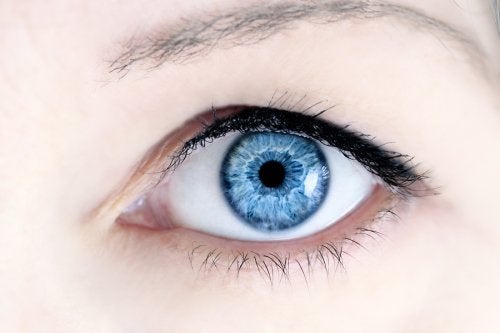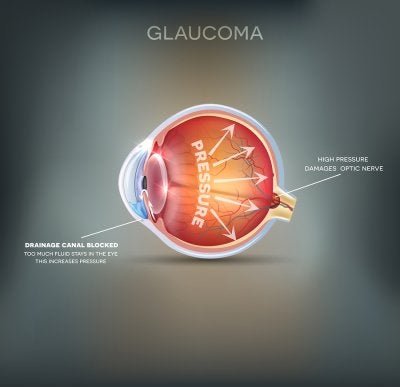-
Are You a Good Candidate for Intraocular Contact Lenses?
Are you tired of having to wear glasses or contacts to see well? If so, then you may be interested in treatment with intraocular implant lenses, or IOL. These lenses work similarly to contact lenses, but they are implanted into your eyes, offering you a more permanent form of vision correction. When determining your candidacy for IOL, there are several factors that your ophthalmologist near Chicago will consider.
Whether or not your eye doctor will recommend intraocular lenses can depend on your level of visual acuity. IOLs are considered ideal for individuals who have severe myopia, or nearsightedness, and are often advised for patients whose high level of myopia makes LASIK a poor choice. If you have nearsightedness greater than -10 or -11 diopters, then you could be a candidate for IOLs. If you’re interested in learning more about whether this procedure is right for you, then schedule an appointment with your eye doctor for an intraocular lens consultation.

-
Tips for Preventing Eye Injuries Around the Home
With the growing popularity of DIY projects and home improvement repairs, it may come as no surprise that eye injuries that occur at home are on the rise. As part of your family’s ongoing eye care near Chicago, use the following tips to help prevent eye injuries around your home.

Inside the Garage
Unsurprisingly, many household eye injuries occur inside the garage or workshop. In many cases, these accidents result due to a lack of protective eyewear. If you are using chemicals, working with tools, securing items with bungee cords, or doing a task that creates dust or other eye irritants, it’s important to use caution. Due to the dangers that these activities can pose, eye doctors advise that you and anyone nearby wear protective goggles to help avert accidents.
In the Yard
While people often worry about the safety of using a lawnmower due to the sharp blades, this type of equipment can present a different kind of hazard. While they may seem innocuous, the pieces of grass and the dust particles that become airborne as you mow can be a threat to your eyes, so use protective eyewear for this task. The same eye care advice goes for using power trimmers on your shrubs and hedges.
Inside the House
Many of the eye injuries that occur inside the home involve chemicals and hazardous items such as bleach and household cleaners, so always wear protective goggles when necessary, and wash your hands after using these products to avoid getting them into your eyes. If anyone in your household uses curling irons or other heated styling devices near their face, remind them to take care when using these appliances, so they can avoid inadvertently making contact with their eyes. Also, eye injuries can occur when cooking due to splashing oil or other hot liquids, so always take care while in the kitchen. Finally, eye doctors advise that you always use caution while drilling or hammering, and even while opening champagne bottles, to help avoid injuries.
-
A Look at Common Symptoms and Causes of Glaucoma
Routine optical exams are an important part of overall eye care, so it’s important to see your eye doctor in Chicago regularly. Doing so can help keep your eyes healthy by detecting problems, such as glaucoma, in their early stages. Read on to learn more about this eye disease.

Glaucoma
Glaucoma typically results due to fluid buildup that increases the pressure in the eye and causes damage to the optic nerve. The early symptoms of glaucoma are often minor or non-existent, so many people do not realize that something is wrong with their eyes until the disease has become advanced. Because glaucoma progresses slowly and often develops unnoticed, it’s important to visit your ophthalmologist regularly for exams. When caught early, glaucoma treatment can help preserve your vision.
Symptoms
The most common form of this disease is called open-angle glaucoma, and it usually has no symptoms while it’s in its early stages. Eventually, the damage to the optic nerve begins to cause blanks spots in the individual’s vision, but even these are difficult to notice until they become substantial in size. Another form of this disease, called angle-closure glaucoma, can cause an acute attack. These attacks can result in nausea, vomiting, severe eye pain, blurry vision, headache, and rings or halos around lights. If you experience any of these symptoms, see an ophthalmologist immediately.
Causes
The inside of your eyes are lined with a layer of tissue that is sensitive to light, called the retina. The optic nerve, which is composed of many nerve fibers, runs like a cable between your retina and your brain, communicating signals from the eye, which your brain then interprets as images. The front portion of an eye contains a clear fluid called aqueous humor. A healthy eye continually produces new aqueous humor, while draining out the existing fluid at the same time. This process works to maintain the healthy balance of pressure within the eye. Eyes with glaucoma, however, fail to preserve this balance, and the added pressure damages the optic nerve fibers and leads to reduced vision or blindness.
-
Preventing Computer-Related Eyestrain
While regularly visiting your ophthalmologist near Chicago is an important part of your ongoing eye care, so is taking care of your vision while at work and home. If your vision gets blurry, your eyes burn, or your neck aches after sitting in front of your computer for a while, then you may be dealing with eyestrain. Watch this video to find out more about this common condition.
Referred to by eye doctors as computer vision syndrome, eyestrain that results from looking at a computer monitor is not an uncommon problem. Luckily, there are several steps that eye doctors recommend for preventing this issue. Your monitor should be 20 to 30 inches from your eyes, so adjusting it to be within this range may alleviate your symptoms. Also, ensure that the monitor is at eye level and that your lighting doesn’t create a glare on the screen.
